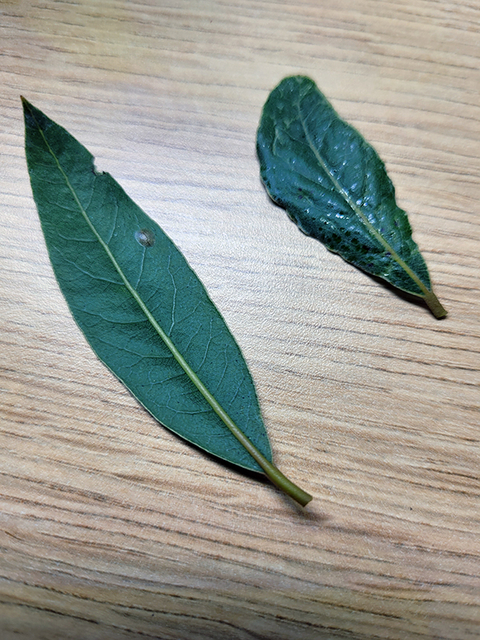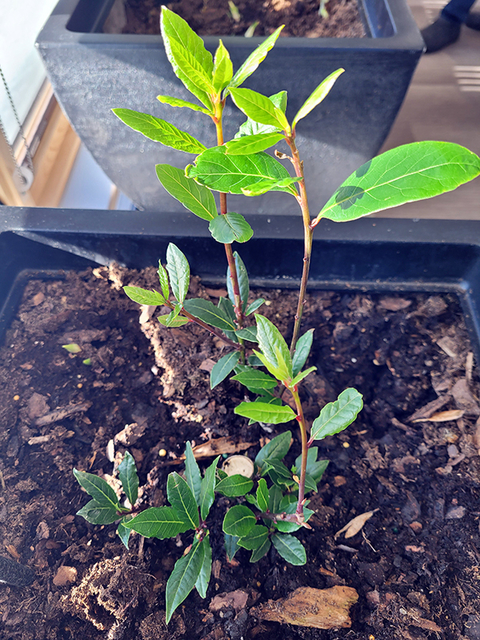Winter gardening includes indoor plant care. Healthy houseplants bring beauty and lush greenery to our indoors. Some also improve indoor air quality and others, like herbs, can be brought indoors in the fall and used throughout the winter to flavor and spice our meals.
In the kitchen classroom at the Minnesota Landscape Arboretum Myers Education Center, Chef Beth Fischer and I are overwintering the bay leaf topiaries that grew in the foodscape this summer. Beth used leaves from these plants to flavor dishes created in the kitchen.
I brought the bays into the kitchen in early October before temperatures dipped below 50 degrees. I wiped down the containers they were in and checked the plants for signs of pests like honeydew, webbing and egg masses. Finding none, I set them on substantial saucers in the sunny southern window of the kitchen. I checked them weekly and watered them as needed. Over time I noticed a growing amount of honeydew on the leaf surfaces of one topiary in particular. After turning over leaves, I found we had a scale infestation.
What are scales?
Scales are sucking insects that typically live on stems and the underside of leaves. They are tough to get rid of. I have composted my share of houseplants when they have become infested with scale. There are different species — armored, cottony and soft — and, while they don’t fly or move around as adults, the tiny young are crawlers and the adults are protected by a covering.
While scales at all ages can be difficult to see, you can see their honeydew. Honeydew is a clear, sticky excrement on leaf and stem surfaces left behind by sucking insects. When indoor plants become infested, there are no natural enemies of these pests. You have to manually scrape off the scale, prune off infested branches or treat with a pesticide labeled for the plant.
Getting rid of scale
Back in the kitchen, scale became a real problem on one topiary in particular to the point that I opted to prune off the main stem. Though no longer a topiary, this bay tree had healthy sprouts growing from its base and it could grow into more of a small shrub. I checked the second topiary and found some honeydew and scale, mostly on younger growth at the ends of the stems. After some judicious pruning, the plant produced new growth that remains scale-free. Each week, I make it a point to check both plants and scrape off any scale found. Once outside in spring, natural enemies will hopefully take over.
Why didn’t I treat them? Some low-impact pesticides like neem oil and horticultural oil are labeled for herbs. However, because this is a kitchen classroom where food is prepared, we chose to avoid using any pesticides to avoid people unknowingly coming in contact with or consuming treated plant parts.
About pesticides
“Pesticide” is a general term for chemicals designed to kill (herbicide, insecticide, fungicide, miticide, rodenticide, etc.). If you choose to use a pesticide, always read and follow the label on any pesticide. Be sure the plant you want to treat is listed on the label. The label is the law.



